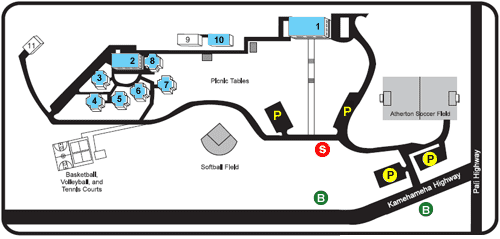“[Gilbert] Islanders were brought [to Hawai‘i] in different ships under contracts for labor work during the years 1880 and 1882. In the contract was a clause agreeing to ship the Gilbert Islanders back to their homes after conclusion of the contracts.”
“[Many] of them were employed on Koloa plantation, Kauai, and a large proportion were taken back according to agreement. Others remained. It is stated, voluntarily. Many it is claimed were not offered passages. During their stay here the Islanders have kept themselves in colonies.” (Hawaiian Gazette, Oct 16, 1903)
“An outcome of the scattering of poor South Sea Islanders after the destruction of Chinatown in January of last year, was the building of a mushroom village of shacks within the breakwater on the Waikiki side of the channel [into Honolulu Harbor]”. (Pacific Commercial Advertiser, Sep 9, 1901)
By that time, residential construction began with the filling of fishponds, marshes and mudflats starting with the area closest to downtown Honolulu; Kakaʻako flourished as a residential settlement where immigrant workers joined the Hawaiian community to form areas such as Squattersville, a shantytown which sprang up along the district’s makai border. (KSBE)
“Within this rock wall enclosure several sand spits have been formed by the action of the tides, and upon these the homeless and destitute people from the South Seas built their squalid homes”.
“That these people are poverty stricken is evidenced by the makeshift affairs which they call their homes. Driftwood, boards secured from any chance place, pieces of tin, boxes, crates and general debris are the component parts of these odd, misshapen structures, which they have erected to shelter them.”
“Picturesque as the village may seem to the stranger who visits it, the Board of Health has determined that cleanliness shall be the first rule of the place”. (Pacific Commercial Advertiser, Sep 9, 1901)
“For some time many [of the Gilbert Islanders] lived in a settlement of huts on sand enclosed by the stone wall built, into the sea at Kakaako, back of the Quarantine wharf.”
“There they supported themselves by fishing, the women assisting by braiding hats and mats. … The Gilbert Islands being a British protectorate the colonies here are under the control of that country and British Consul Hoare has taken a strong interest in the matter of sending them home.” (Hawaiian Gazette, Oct 16, 1903)
“The Lewalewa settlement, or the South Sea Island settlement, as it is more commonly known, which has existed on the breakwater enclosure beyond the boathouses, for several months, is doomed.”
“The Board of Health says that too many deaths from tuberculosis have occurred there, and with the co-operation of Captain Merry, who has charge of the Naval Station here, it is hoped that the settlement may be removed.”
“Since the plague of last year this sand spit, protected by the stone breakwater, has been a refuge for the poverty-stricken South Sea Islanders. They built small shacks of driftwood, and almost anything that would keep out wind and rain, and have eked out a miserable existence”.
“Yesterday the question of the health of the inhabitants of that interesting village was brought up and the statement made that there was at present too much tuberculosis in the place. Deaths have been numerous from this cause, and it was declared that a change of conditions must take place there.” (PCA, June 6, 1901) They later moved to Kalihi. (PCA, Oct 16, 1903)
Later, “Acting Governor Atkinson and Superintendent of Public Works Holloway had a meeting this morning with the representatives of seventeen families of Hawaiians who have ‘squatted’ on land in Kakaako and who were served with notices of eviction at the instance of Mrs. Ward, owner of the property.”
“It appears that the Hawaiians were living principally by fishing in the private fishing right adjoining the land. As a result, it was impossible to lease the fishery.”
“The Hawaiians are all poor people and arrangements are being made to find them homes elsewhere. ‘We hope to place them on lands In Kalihi where they will be all right,’ said the Acting Governor, ‘and thus all parties will be satisfied.’”
“Aside from the fishery proposition complaints were made that the colony of squatters was a somewhat noisy one.” (Hawaiian Star, May 25, 1906)
Even later, a much larger settlement on the ‘Ewa side of Kewalo at Kaʻākaukukui, near the former location of Incinerator Number One at Kaka‘ako, was referred to as “Squattersville” because the residents lived without authorization on land belonging to the Territory of Hawai‘i.
The dwellings that lined the shoreline, where the present Olomehani Street now runs, were protected from the ocean by a low seawall about three feet high.
The community of about 700 Hawaiians and part-Hawaiians was evicted in May 1926 and their homes were razed. The City and County of Honolulu constructed two incinerators and an ash dump at Kewalo (what we now call Kakaʻako Makai).
Despite its use as a refuse dump, the Kaʻākaukukui area continued to be heavily utilized as a fishing and swimming area. (HABS Report)












































